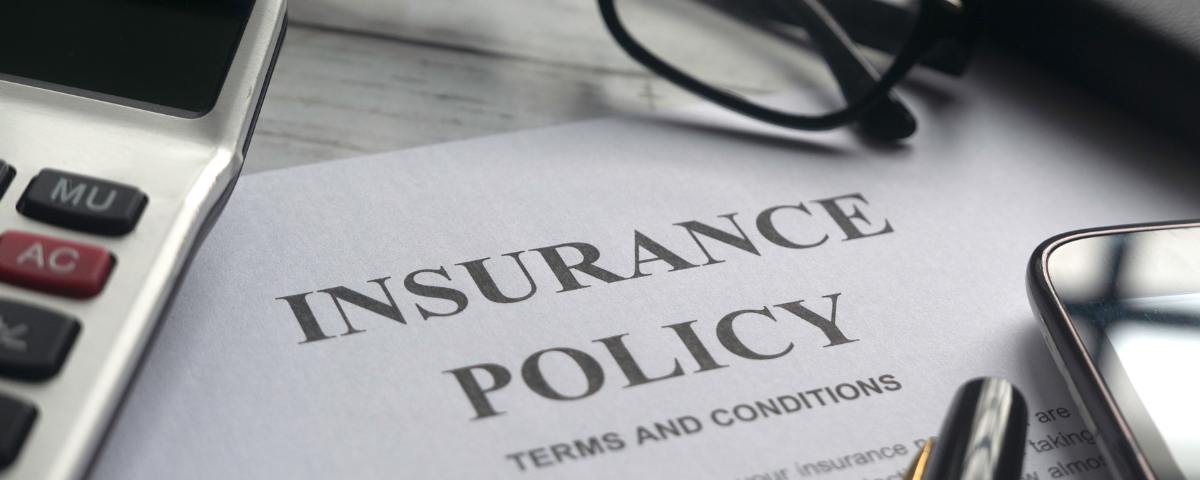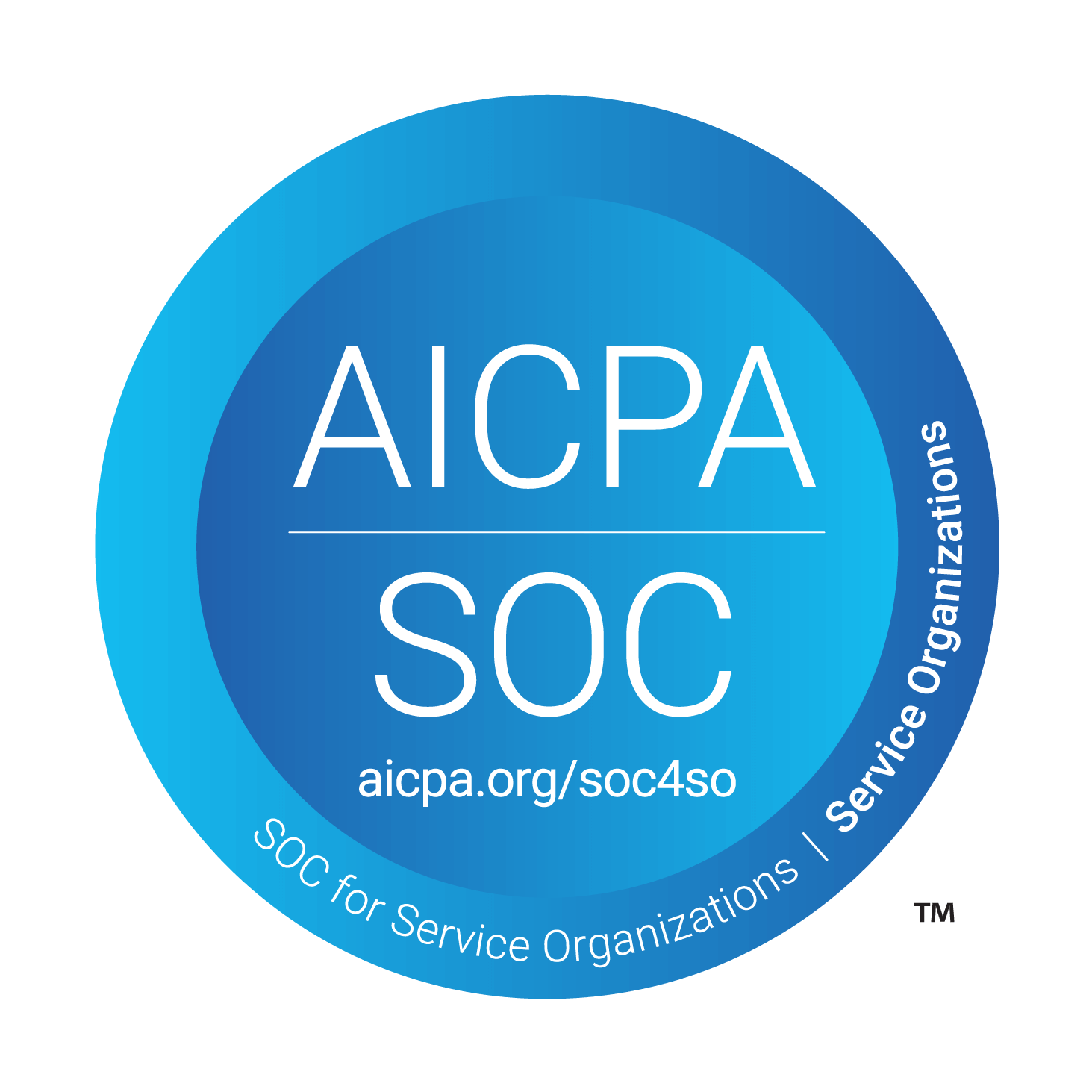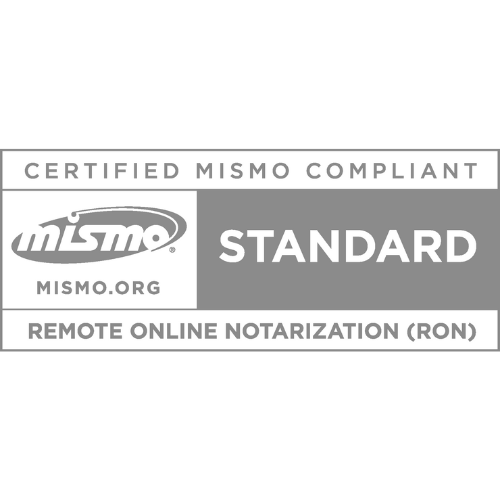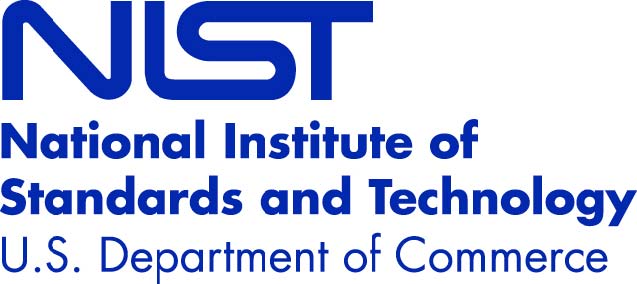Disclaimer: This blog post is for informational purposes only and does not constitute legal advice. Please consult an attorney for guidance on specific laws regarding Remote Online Notarization (RON), digital signatures, and related legal matters. As laws concerning RON and notarization are subject to frequent changes, it is advisable to verify current regulations with your local government.
In the insurance world, documentation may be everything. From policy applications to claims settlements, having the right signatures and confirming their validity can reduce risk, streamline compliance, and possibly even deter fraud. One tool that may support these efforts is the notarized document.
But what exactly is a notarized document, and how does it apply to insurance workflows? This guide explores the basics, outlines common use cases, and offers insights into how technologies like Remote Online Notarization (RON) may help modernize insurance documentation.
What Is a Notarized Document?
A notarized document is a form or agreement that has been reviewed and certified by a notary public, an individual appointed by the state to serve as a neutral witness during the signing of important papers. In the context of insurance, this may include documents related to claims, policy changes, beneficiary updates, or legal settlements.
The notarization process typically involves several key steps:
- Identity Verification: The notary examines a valid, government-issued photo ID to reasonably confirm the identity of the signer.
- Voluntary Participation: The notary may ask questions to ensure that the signer appears to be acting willingly and without coercion.
- Awareness and Understanding: The signer should demonstrate that they appear to understand the contents of the document they are signing. While a notary does not provide legal advice, they may decline to proceed if the signer seems confused or unsure.
Once these criteria are met, the notary completes a notarial certificate, either directly on the document or as a separate attached page, and affixes an official seal or stamp. This mark helps indicate that the document has followed a formal notarization process.
For insurance companies, having documents notarized may support internal compliance efforts, enhance the validity of records in legal or regulatory matters, and provide additional confidence in the documentation process.
It’s important to note that a notarized document in and of itself does not prove the accuracy or truthfulness of the document’s content. Rather, it confirms that the signature was made under proper circumstances by someone who was verified to the best of the notary’s ability. This distinction matters when evaluating whether notarization alone is sufficient for your specific document or transaction.tion matters when evaluating whether notarization alone is sufficient for your specific document or transaction.
Why Might Insurance Documents Be Notarized?
In the insurance industry, documentation plays a central role in nearly every process, from issuing policies to resolving claims. Having certain documents notarized may add an extra layer of reliability, particularly when those documents involve financial transactions, changes in policyholder information, or legal agreements. While not every insurance document requires notarization, there are several reasons why it may be considered beneficial, or even necessary in some cases.
Fraud Deterrence
One of the most recognized reasons for notarizing insurance-related documents is to help deter fraud. When a notary verifies the identity of a signer and observes the signing process, it becomes more difficult for someone to forge a signature or impersonate another party. This may be especially important in high-risk transactions, such as beneficiary changes, ownership transfers, or large claims settlements.
Increased Credibility and Legal Standing
A notarized document is often presumed to be more credible than one without official notarization. In legal or administrative proceedings, having a notarized document may strengthen the assumption that signatures are authentic and that the individuals involved understood the nature of the transaction. For insurers, this could provide a helpful record in the event of future disputes, investigations, or audits.
Compliance with State or Internal Requirements
Some insurance-related documents may be required by law or internal policy to be notarized in order to be valid. For example, certain states may require notarization for affidavits related to claims, or for powers of attorney used in long-term care insurance. Similarly, internal underwriting, risk management, or legal departments might require notarization as a best practice in specific scenarios, particularly when large sums or third-party authorizations are involved.
Support for Digital and Remote Transactions
As more insurance workflows become digitized, notarization—especially through Remote Online Notarization (RON)—can support secure, compliant document execution without requiring in-person meetings. RON may enable insurers to serve policyholders more efficiently, while still maintaining the formality associated with traditional notarization.
Notarization, whether traditional or remote, is not necessarily a guarantee that a document will have the intended effect that its contents purport to give; however, in the context of insurance, it may offer added value by helping verify identities, reinforcing protocols, and contributing to a smoother documentation process across the policy lifecycle.
Trust Building with Policyholders and Partners
When a document is notarized, it signals to all parties—policyholders, agents, reinsurers, legal teams—that the transaction followed a formalized process. This may help build trust in sensitive transactions, especially when documents are being executed remotely or across jurisdictions.
Insurance Documents That May Require Notarization
Insurance companies may encounter a wide range of documents that could benefit from or require notarization. These might include:
Policyholder Documents
- Policy Applications
- Policy Amendments or Endorsements
- Beneficiary Designation Forms
- Ownership Transfer Requests
Claims Processing
- Claims Forms
- Affidavits
- Proof of Loss Statements
Legal and Settlement Documents
- Settlement Agreements
- Subrogation Forms
- Lien Releases
Other Related Forms
- Powers of Attorney
- Annuity Contracts
- NDAs or Confidentiality Agreements
Whether notarization is required may depend on internal policy, the state where the customer resides, or the preferences of partner organizations like reinsurers or legal counsel.
How Remote Online Notarization (RON) May Streamline Insurance Workflows
Remote Online Notarization (RON) enables insurance professionals and policyholders to notarize documents through a secure online platform. Instead of requiring an in-person meeting, RON allows for identity verification and document signing via secure audio-video technology.
Benefits of RON for Insurance Companies:
- Faster Turnaround: Claims and policy changes may be processed more quickly with instant access to notarization.
- Greater Access: Policyholders can sign from anywhere, especially useful in emergencies or during travel.
- Improved Security: Advanced two-factor identity verification (e.g., knowledge-based authentication) adds another layer of protection.
- Audit Trails: RON platforms typically record each session and store a digital journal, aiding compliance.
- Bulk Signings: Multiple documents or policies can be notarized efficiently in a single session with one or multiple signers, streamlining high-volume needs.
- Greater Availability of RON Notaries: More notaries can serve policyholders across time zones and extended hours, reducing delays.
RON might not replace all traditional notary functions, but it can serve as a powerful supplement, especially for high-volume or time-sensitive insurance documentation.
The Notarization Process for Insurance Documents
The process of notarizing insurance documents generally follows a standardized set of steps designed to verify the identity of the signer and ensure the document is executed willingly and correctly. Whether notarizing a claims affidavit, a beneficiary designation, or a policy amendment, these steps help add a layer of assurance to the process, particularly when sensitive or high-value transactions are involved.
Here’s how the process typically works:
1. Prepare the Document
The insurance document should be fully completed, except for the signature section, before the notarization. Incomplete or blank fields (aside from signature and notary sections) may lead the notary to delay or refuse the notarization.
2. Verify Identity
The notary reviews the signer’s identification, which is usually a government-issued photo ID such as a driver’s license or passport. This step is key for confirming the signer’s identity and preventing impersonation, and it is often combined with knowledge-based authentication (KBA) for two-factor authentication for added security.
3. Confirm Willingness and Understanding
The notary may ask basic questions to assess whether the signer appears to be signing voluntarily and with a general understanding of the document’s nature. While notaries do not provide legal advice or assess the content itself, they may decline to proceed if the signer appears confused, coerced, or impaired.
4. Witness the Signature
The signer must sign the document in the notary’s presence—whether in person or via secure audio-video technology (in the case of Remote Online Notarization, or RON). If multiple parties are involved, all may need to be present for the same notarization session, depending on the document requirements.
5. Complete the Notarial Certificate
The notary fills out a notarial certificate, which includes the date, type of notarization (such as an acknowledgment or jurat), and their official digital seal or stamp. This step formalizes the act and provides visible verification that the document was properly witnessed.
6. Recordkeeping
Depending on state law or internal policy, the notary may also enter the notarization into an official journal, noting details such as the document type, date, and method of ID verification. For RON, an audio-video recording of the session and digital journal entry are often created for compliance purposes.
This process may take only a few minutes, but it can help protect all parties involved, especially when insurance documents involve financial obligations, beneficiary rights, or legal liabilities. Whether using a traditional in-person notary or a secure RON platform, following this structured process supports the integrity of your documentation.
Why Insurance Companies May Benefit from Partnering with NotaryCam for RON
As insurance operations continue to digitize, many companies are exploring more efficient ways to execute critical documents without compromising security or integrity. Remote Online Notarization (RON) may offer a compelling solution, and NotaryCam is positioned to support insurance carriers, agencies, and claims departments with an enterprise-ready approach to online notarization.
Here’s why NotaryCam may be a valuable partner:
Designed for Complex Insurance Workflows
NotaryCam’s platform is built to accommodate a wide range of insurance documents, including policy applications, beneficiary designation forms, claims affidavits, and settlement agreements. These document types often require timely execution, identity verification, and compliance documentation, all areas where RON can support process improvements.
Streamlined, On-Demand Access
With NotaryCam, insurers may reduce delays by allowing policyholders and internal teams to complete notarizations remotely, without coordinating in-person meetings. This may be especially useful for time-sensitive matters like claims resolution, policy changes, or power of attorney forms related to benefits administration.
Built-In Security
NotaryCam uses secure, encrypted audio-video connections and industry-standard ID verification methods, such as credential analysis and knowledge-based authentication. These features, along with session recording and digital audit trails, may support compliance with internal protocols, regulatory expectations, and fraud prevention practices.
Nationwide Coverage, Anytime Access
As a pioneer in the RON space, NotaryCam maintains a network of professionally trained, commissioned notaries who can serve clients across jurisdictions, 24/7, including evenings and weekends. This flexibility may help insurance companies better serve policyholders regardless of location or time zone.
Seamless Integration with Insurance Systems
NotaryCam’s technology is built to integrate into broader digital ecosystems, making it easier to align RON with e-signature tools, document management systems, or customer portals. This can reduce administrative burden and enhance the overall user experience for both staff and customers.
Partnering with NotaryCam may help insurance companies modernize how they manage notarized documents, without sacrificing trust, compliance, or operational control. As more policyholders expect digital convenience, NotaryCam’s flexible, secure, and scalable platform offers a forward-looking approach to insurance documentation.
Common Use Cases for Notarized Documents in Insurance
Notarized documents may support a wide range of insurance operations, particularly when identity verification, fraud prevention, or regulatory compliance is a concern. While not every document requires notarization, there are several scenarios where it may be recommended—or even required—to complete a transaction properly.
Claims Processing
Notarization may be used to add credibility and formality to documents submitted during the claims process. This can include:
- Affidavits of Loss
- Proof of Ownership or Value
- Sworn Statements from Policyholders or Witnesses
These notarized documents may help insurers validate critical information before proceeding with payment or settlement.
Beneficiary Designation and Changes
When a policyholder updates or names a new beneficiary, insurers may request a notarized document to confirm the request is legitimate and voluntary. This may be especially useful when beneficiaries are changed later in life, during divorce, or amid estate planning transitions.
Policy Amendments and Ownership Transfers
For changes to policy terms, ownership, or coverage details, notarization may help ensure that all involved parties consent to the revisions and that the documentation is properly executed. This is particularly relevant for business-owned or group life insurance plans.
Powers of Attorney and Representation Forms
When an individual designates someone else to act on their behalf—such as during claims or policy servicing, a notarized power of attorney form may be required. This helps confirm the authority is being granted willingly and with clear understanding.
Annuity Contracts and Settlement Agreements
In transactions involving significant financial outcomes, such as annuity elections or legal settlements, notarized documents may reduce the likelihood of disputes and support the enforceability of the agreement.
Subrogation and Lien Release Documents
Insurers pursuing recovery from third parties or releasing claims on damaged property may use notarized documents to formalize the process and maintain a strong paper trail.
Each of these use cases reflects how notarized documents may serve as a practical tool to protect all parties, enhance operational integrity, and meet documentation standards within the insurance industry. As digital solutions like Remote Online Notarization (RON) become more widely adopted, insurers may find it easier to incorporate notarization into everyday workflows.
Conclusion
Notarized documents continue to serve a valuable function across the insurance industry, supporting everything from policyholder transactions to claims processing and legal agreements. While the act of notarization doesn’t necessarily guarantee the content of a document, it may provide important verification that helps deter fraud, satisfy regulatory requirements, and reinforce the integrity of critical paperwork.
As insurance organizations embrace more digital workflows, Remote Online Notarization (RON) presents a secure, accessible way to manage notarized documents without the delays or limitations of in-person processes. Whether used for beneficiary changes, affidavits, or settlement agreements, RON can help insurers maintain compliance and improve customer experience at scale.
By understanding the role notarized documents play, and by working with a trusted RON partner like NotaryCam, insurance companies may be better positioned to modernize operations while meeting the demands of a fast-evolving marketplace.
Frequently Asked Questions About Notarized Documents for Insurance
What does a notary public do for the insurance industry?
A notary public is a state-appointed official who acts as an impartial witness during the signing of important insurance-related paperwork. Their role typically involves reviewing the ID of the signer, confirming that they appear to be signing voluntarily, and ensuring the document is complete. When the process is finished, the notary adds their seal to create a notarized document, which may help deter fraud and support the integrity of policyholder forms, claims affidavits, or settlement agreements.
Can a notary refuse to notarize an insurance document?
Yes, a notary may decline to notarize a document under certain conditions. This might occur if the signer cannot be properly identified, appears to be under duress, does not seem to understand the document, or if the document is incomplete or raises concerns about potential fraud. Each notary follows the regulations outlined by their commissioning state.
How long is a notarization valid for insurance purposes?
The notarization itself does not typically expire, as it certifies that the document was signed under appropriate conditions at a specific point in time. However, the underlying insurance document, such as a claims form or affidavit, may have its own deadlines or expiration based on the policy terms or legal context. A notarization completed during a notary’s valid commission remains effective even after the commission has expired.
Do I need an appointment for notary services related to insurance documents?
In many cases, yes. Traditional notary services at banks or shipping stores may require an appointment or offer limited availability. Mobile notaries and Remote Online Notarization (RON) providers often offer more flexible scheduling options, which can be helpful when urgent insurance documentation is required. It’s best to check availability in advance.
What should I do if there’s a mistake on an insurance document before notarization?
If you find an error before signing, it’s usually advisable to start with a new, corrected version of the form. Using correction fluid or heavily editing the document may cause concerns about authenticity. When in doubt, consult your insurance company, legal advisor, or the originator of the document to ensure any revisions are handled properly before proceeding with notarization.
Can any insurance document be notarized?
Many insurance-related documents can be notarized, such as claims affidavits, power of attorney forms, or settlement agreements, assuming the notarial act is legal and the signer meets the necessary requirements. However, certain documents (e.g., certified copies of official records like death certificates) must be obtained from the issuing agency and cannot be notarized copies.
How do I find an online notary for insurance documents?
To get a notarized document remotely, search for a Remote Online Notarization (RON) provider that meets your state’s legal requirements. Look for platforms that are secure, reputable, and offer services tailored to insurance documentation. Providers like NotaryCam allow you to upload insurance forms, verify your identity, and complete the notarization process online, helping insurers and policyholders save time while maintaining compliance.








 Your Privacy Choices
Your Privacy Choices


